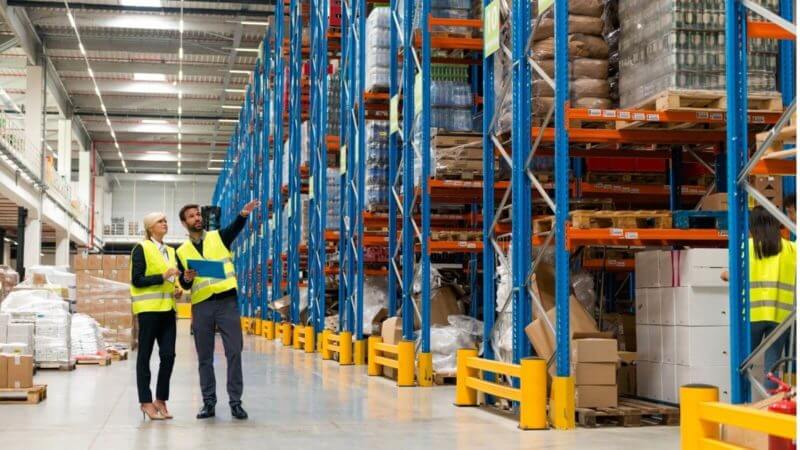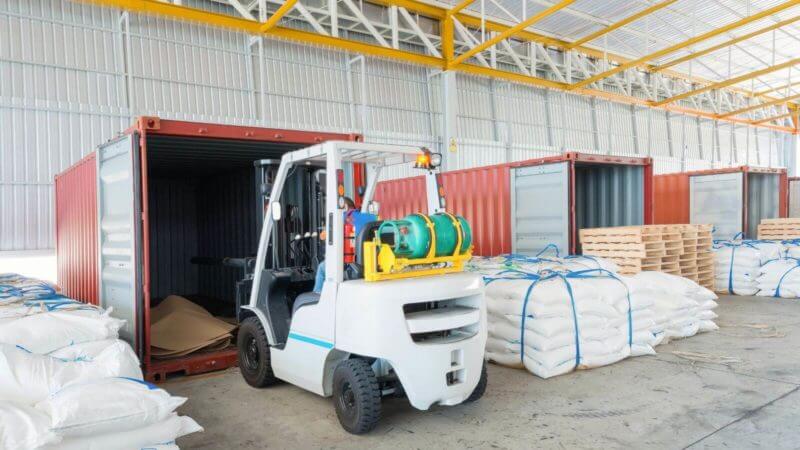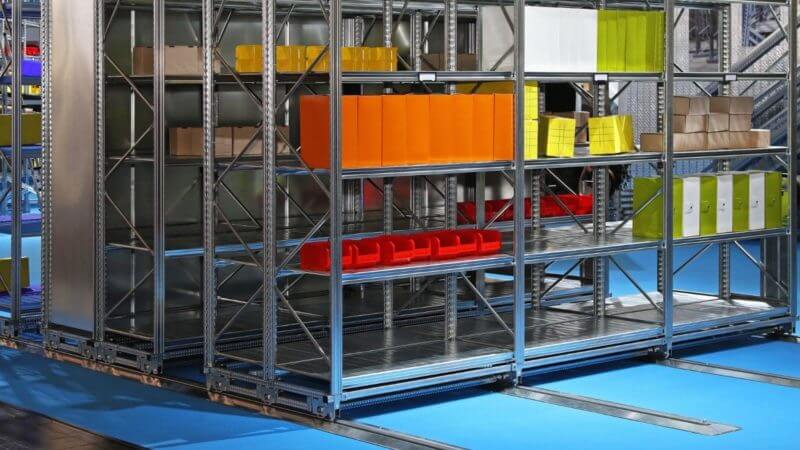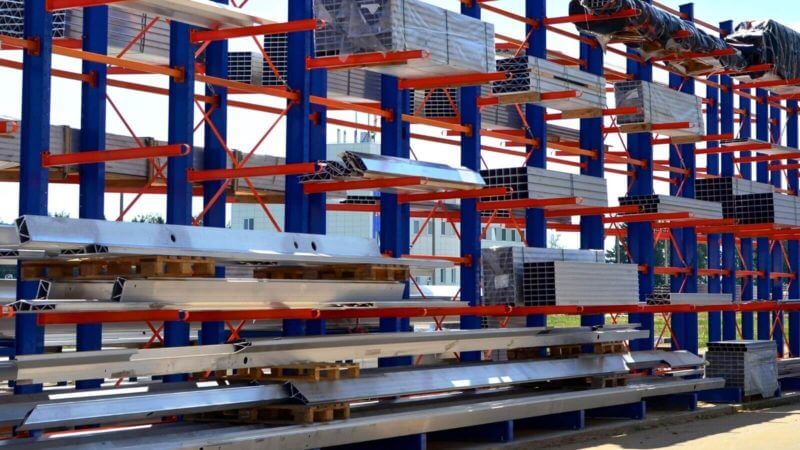Guide To Types of Warehouses for Shipping
05/08/2021Importance Of Warehouses
Goods in the process of shipping need safe and secure storage to protect them from the elements of nature, damage and destruction due to careless handling, pilferage, etc.
In business, goods require storage as they wait for the customer. Warehouses are buildings and related infrastructure that are used for the storage of goods.
Warehouses have the facilities for receiving goods, stacking or storing them safely, and picking these goods when it is time to ship them to a customer or a new location.
These activities have to be carried out while ensuring the safety and security of personnel handling the goods at the warehouse, as well as the goods.
Modern warehouses have come a long way from traditional goods sheds or goods yards.
A goods shed is a building without any storage infrastructure that is used for the stacking of goods. Usually, such buildings have no proper safety or security features. A goods yard is an open but usually enclosed compound where goods are kept.
Most modern warehouses are engineering marvels. They have the latest storage and handling equipment and inventory management technologies.
 While optimizing storage space, these latest features ensure accurate stock-keeping and picking of goods.
While optimizing storage space, these latest features ensure accurate stock-keeping and picking of goods.
When the world is more conscious about the quality of products, food safety, etc. security and hygiene of the stored products are given utmost importance in such warehouses.
Important Features of Modern Warehouse
Let us take a look at some of the important features of a modern warehouse.
Availability of Appropriate Storage
Most modern warehouses have an ambient, chill, and frozen storage facilities to cater to the different requirements of the market. It is common to have a customer with the requirement for these three types of warehousing under one roof.
Accessibility to Markets and Ports
Most successful warehouses have proximity to ports. It makes transportation of goods easy – for imports as well as exports.
Safety and Security
For the safety and security of personnel as well as the goods stored within, warehouses these days, have well-trained security staff, CCTV, motion sensors, temperature sensors in storage areas, fire-fighting equipment, etc. They meet all the safety and security standards prescribed by the relevant authorities.
Efficient and well-trained staff
Well-trained and efficient staff help run a warehouse smoothly through proper planning and execution of operations.
Latest storage and handling equipment
Modern technology plays an important role in the success of any warehousing and logistics operation. Equipment, machinery, and software used should be upgraded periodically to meet the demands of the market while making it easy for the user to handle.

Cross-docking facilities
One important feature that most customers look out for in warehouses is the facility to cross-dock.
What is cross-docking?
When goods are received and picked immediately for dispatch and delivery without storing them inside the warehouse, it is called cross-docking. This saves time, storage space, and cost.
Warehouse Management System (WMS)
A Warehouse Management System (WMS) software optimizes storage and the receipt-stacking-picking procedures. It is a system of optimized inventory management.
Enterprise Resource Planning (ERP)
ERP software encompasses inventory management, principal and customer relationship management, as well as accounting. This all-in-one software integrates the functions of a warehouse or even the whole business.
Emergency backup
Facilities for backup in the event of power failures, machinery and equipment breakdown, and other unforeseen calamities should be in place.
Some modern warehouses even have agreements partnering with other warehouses to provide on a reciprocal basis, storage and other facilities in the event of a breakdown.
Large business houses may own warehouses. Those with no warehouse facilities have the option to go to public or private warehouses for their storage needs.
A broad classification based on ownership and running of warehouses includes public, private, and cooperative warehouses.
Types of Warehouses
Public Warehouses
Public warehouses are government-run but available to both the public and private sector businesses. They might not be state-of-art or technologically in front, but they serve the purpose of storage of goods at affordable rates.
Most such public warehouses are located in easily accessible areas that are close to markets as well as seaports or airports.
Private Warehouses
Private warehouses are run by private organizations. Some of them may be for the exclusive storage of goods of the owning company while others are available for the storage of goods to the public.
Other than accessibility, being technologically forward is their strong point. These days most private warehouses have moved from just being storage locations to logistics service providers.
Other than providing storage space for the goods of their customers, they help with planning, implementation, and execution of the customer’s transportation needs, ordering, picking of goods, and purchase requirements. In other words, it means all the inbound and outbound activities of the customer.
The terms ‘inbound and outbound’ broadly translate to purchases from principals and sales to customers. Modern logistics companies usually meet all the requirements of their customers.

They may offer warehouse management systems (WMS) for accurate inventory management and enterprise resource planning (ERP) for automation of all logistics-related activities including accounting and customer relationship management (CRM). In certain cases, the ERP includes WMS.
Cooperative Warehouses
Farmers, orchard and vineyard owners, aqua-culturists, etc. usually form cooperatives. These cooperatives may own warehouses that provide the appropriate storage space to their members at subsidized rates.
Depending on the availability of space, cooperative warehouses may also let it out to outside parties at a slightly higher rate.
A further categorization of warehouses based on utilities provided would include bonded warehouses, consolidation warehouses, smart warehouses, etc.
Bonded or Duty-Free Warehouses
Bonded warehouses are customs-approved warehouses that allow businesses to store their imported goods before payment of customs duties and taxes.
Good can be stored in bonded warehouses for an extended period until it has to be taken outside for sale or use after payment of customs duties and taxes.
The goods that are stored in bonded warehouses are classified as ‘duty-free’. Once customs duties and taxes are paid on the goods that are taken out, they are called ‘duty-paid’ goods.
Storing goods in a bonded warehouse does away with the need for immediate payment of customs duties and taxes upon receiving the goods.
It helps the working capital of a business as goods are cleared directly to the bonded warehouse without payment of customs duty and taxes.
This is beneficial to businesses that import high-value goods with a high rate of customs duty.
Customs duty is paid only when goods are cleared. Goods stored in bonded warehouses can be reexported easily. It also facilitates quality checks, sorting, packaging, or processing of such goods while in the bonded storage.
Consolidation Warehouses
When several cargo batches of small volumes from customers, meant for the same destination are combined and shipped, it is called consolidation. Such goods are collected, segregated, and sent by sea freight, usually as full container loads (FCL).
Consolidations help when the volume of cargo to be shipped is small. Consolidators collect cargo from the different customers, consolidate these quantities from their consolidation warehouse to full or near-full container loads for shipment. This helps to bring down the freight cost. This is also called groupage cargo.
Smart Warehouses
Smart warehouses use the latest in technology for receiving, storing, and picking of goods. Smart warehouses may also make use of drones or robots for picking, packaging, and stacking goods.
Enterprise resource planning (ERP) and warehouse management system (WMS) helps to ensure minimum human intervention in matters relating to finance, customer relations and the accuracy of stocks.
Such warehouses are found very useful for the storage of high-value electronic parts, pharmaceutical drugs, etc.
Warehouse Management System (WMS)
Warehouse Management System (WMS) records the receipt, storage location, picking, and dispatch of goods from the warehouse.
It optimizes storage space by suggesting the storage location based on FIFO, FEFO, or LIFO rules of picking goods. WMS provides real-time data to the user.
First-In First-Out (FIFO)
First-In First-Out (FIFO) is the principle of picking goods based on the receipt of goods. Those goods which were received first are the ones to be picked for dispatch.
First-Expiry First-Out is (FEFO)
In First-Expiry First-Out (FEFO), the stock with the earliest expiry date (or Best-Before Date) will be picked first. Both FIFO and FEFO help in maintaining stock freshness at the same time avoiding aged stocks sitting in the warehouse.
Last-In First-Out (LIFO)
Last-In First-Out (LIFO) requires the last item received to be picked first for dispatch. An order from a preferred customer is an example.
These picking rules are based on customer requirements. WMS helps with periodic inventory counts that are required to ensure that stocks are maintained accurately.
Enterprise Resource Planning (ERP)
Enterprise Resource Planning (ERP) includes inventory management, principal and customer relationship management, and accounting. Data from WMS is used in ERP to create accurate business forecasts.
ERP is used in purchase ordering and accounting. It, therefore, integrates all these functions and the organization does not have to invest in multiple software to handle them.
Temperature-controlled Warehouses
As consumer demands increase, they are also more aware of the need to get safe, clean, and hygienic products for the money they spend, especially when it comes to food items, pharmaceuticals, etc. Storage of goods under the correct temperature in hygienic conditions extends its shelf life.
Warehousing technology has kept pace with this demand by having temperature-controlled warehouses to meet the different requirements of storage of different types of items.
Depending on the type of goods stored, warehouses can broadly be classified as ambient, chill, or frozen.
Ambient Warehousing
Also called dry warehousing or warehousing at room-temperature, goods are stored in a dry, clean, and well-ventilated storage area at temperatures between 14° C and 24° C (57.2° F and 75.2° F).
Certain types of food items, vegetables, fruits, canned food items, electronics, etc. require storage at ambient temperatures. The temperature may vary slightly according to the type of item being stored.
Chill Warehousing
Chill warehouses are used for the storage of certain types of vegetables, fruits, dairy produce, meat, seafood, etc. Temperatures between 7° C and 14° C (44.6° F and 57.2° F) are maintained in such warehouses.
Frozen Warehousing
Frozen food, meat, seafood, and some types of pharmaceutical drugs require storage under frozen conditions. Frozen food usually needs to be stored at a constant temperature of -18° C (-0.4° F) or less. When the temperature rises above this, it affects the quality of such items resulting in spoilage.

Types of Warehouse Racking
Pallets are the flat wooden or plastic structures on which boxes or goods are kept in a warehouse. Pallets usually come in a standard size of 48 inches X 40 inches though pallets of other sizes are also available in the market.
Racking is the multi-level metal framework within a warehouse that holds several pallets.
An efficient racking system optimizes warehouse space making retrieval of inventory, product flow (FIFO, FEFO, LIFO, etc.), and accessibility of pallets easier.
MHE’s (Material Handling Equipment) such as forklifts, automatic pallet jacks, etc. should be able to put the pallets and remove them from the racks easily. Some of the different types of warehouse racking are as follows:
Selective Racking
Consisting of upright frames, horizontal beams, braces, supports, and footplates, selective racking is the most commonly found type of racking in warehouses.
Pallets can easily be put-away and removed from these types of racks as every pallet faces the aisle in front that can be used by forklifts or pallet jacks.
Selective racks are the easiest to assemble and disassemble, using bolts. However, in selective racking, warehouse space is not utilized to the optimum because of the space taken up by several aisles.

Mobile Racks
Mobile racks are selective racks but with a wheeled-base. These racks can be moved along the tracks that are embedded on the warehouse floor.
Ideal for storing goods in bulk that do not require to be moved frequently, mobile racks provide the maximum space utilization within a warehouse.
Cantilever Racks
Cantilever racks consist of several upright single beams, each with arms that extend outward for carrying the load. It is especially convenient for the storage of long and unwieldy goods such as steel pipes, timber, metal trusses, etc. With a minimum number of parts, this type of racking is very easy to set up.
There are several other methods of setting up racks inside a warehouse. Each method is chosen to suit specific products that have specific storage requirements.

Modern warehouses that meet the above customer requirements will always be in demand. Setting up a warehouse requires a lot of planning, keeping growth in mind.
Choosing the right type of warehouse depends on a company’s warehousing requirements, budget, and other such business factors.
Source: Marine Insight


